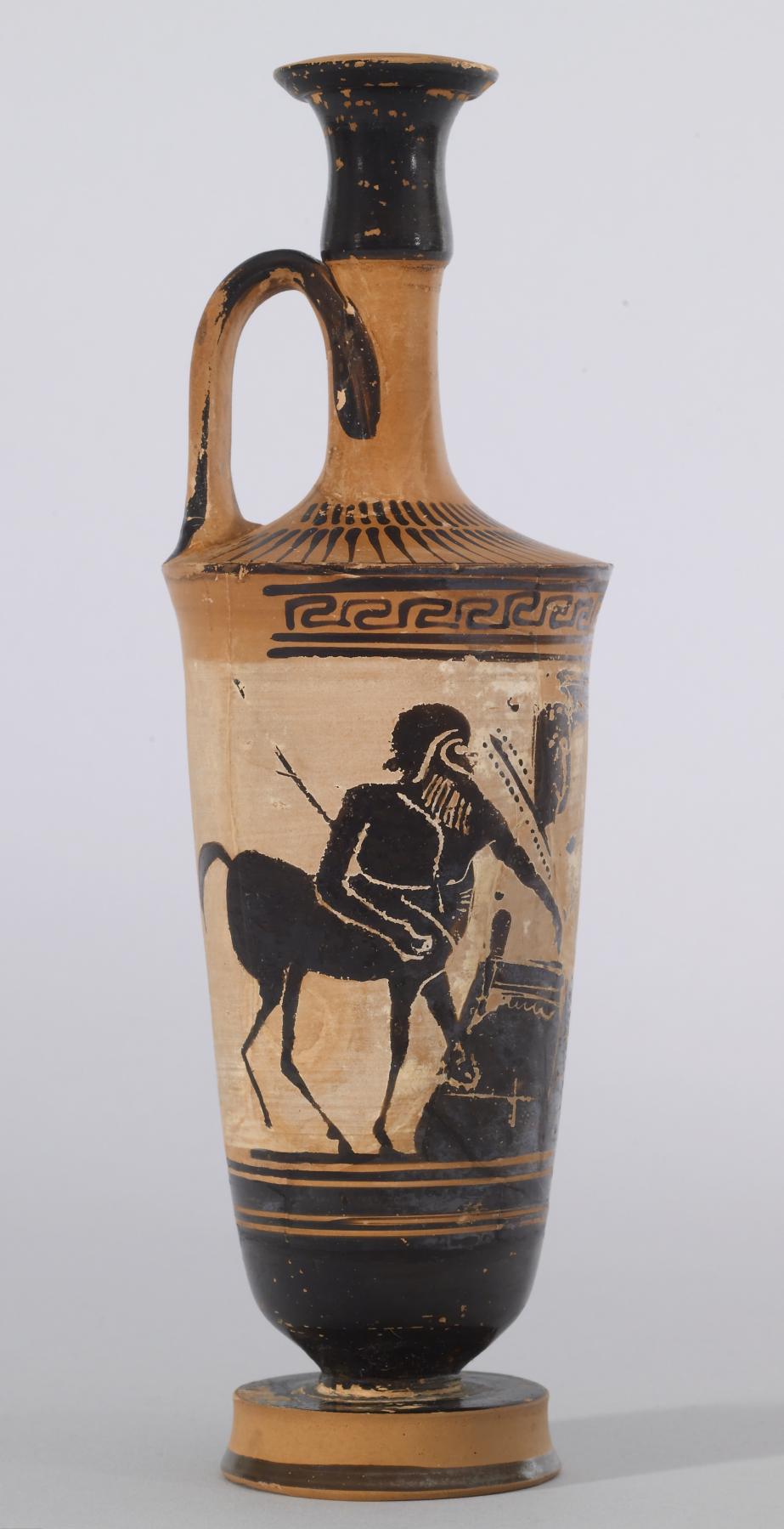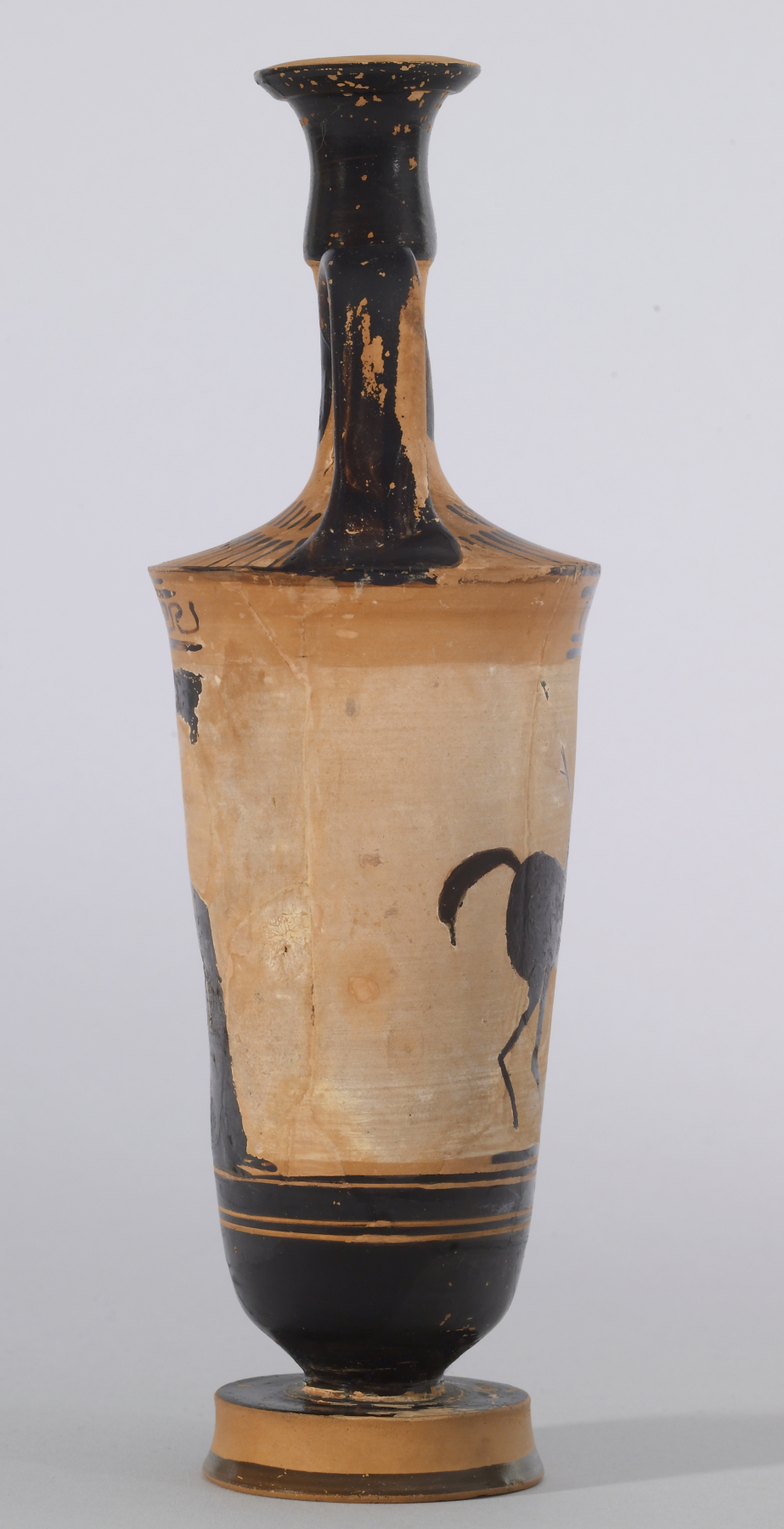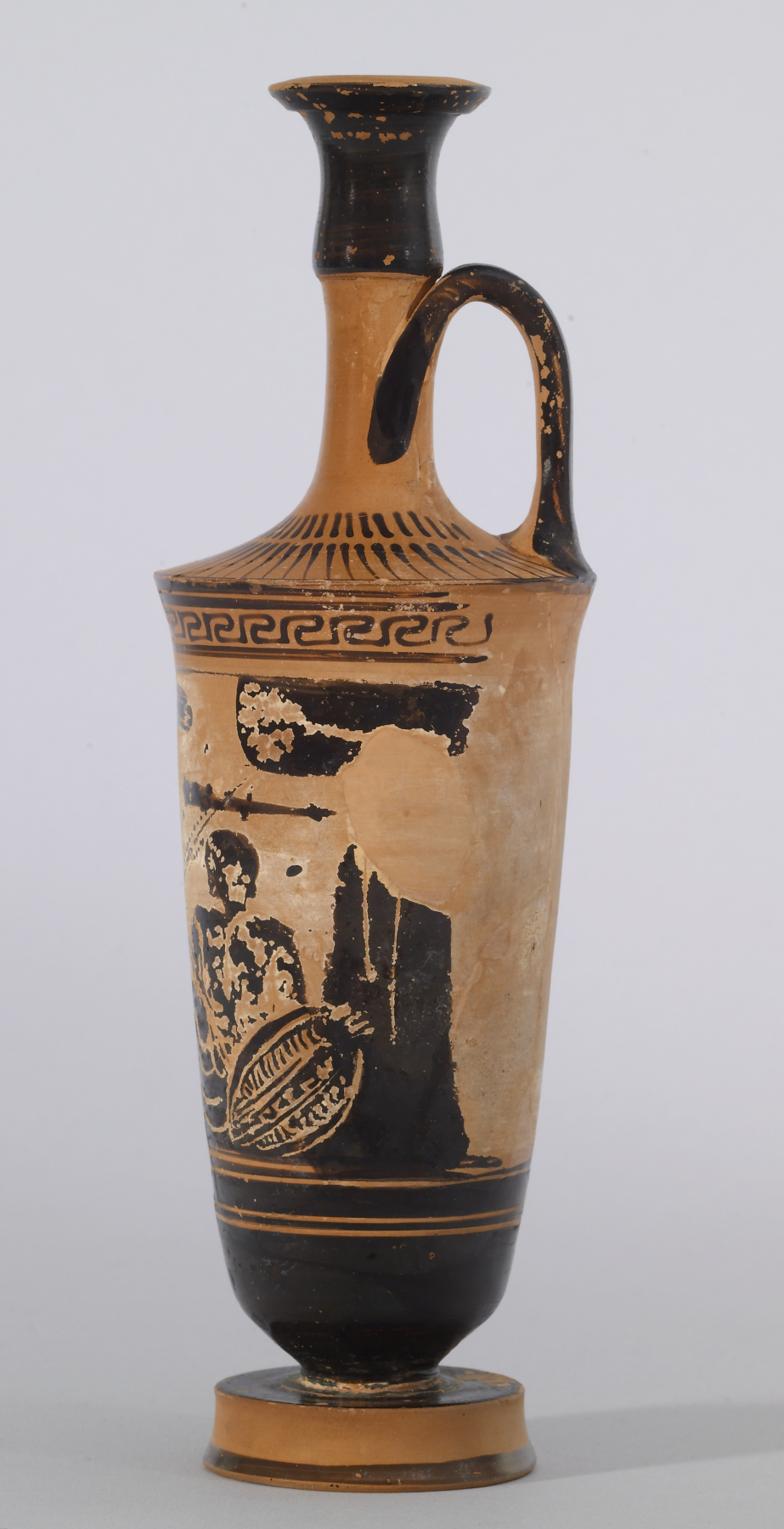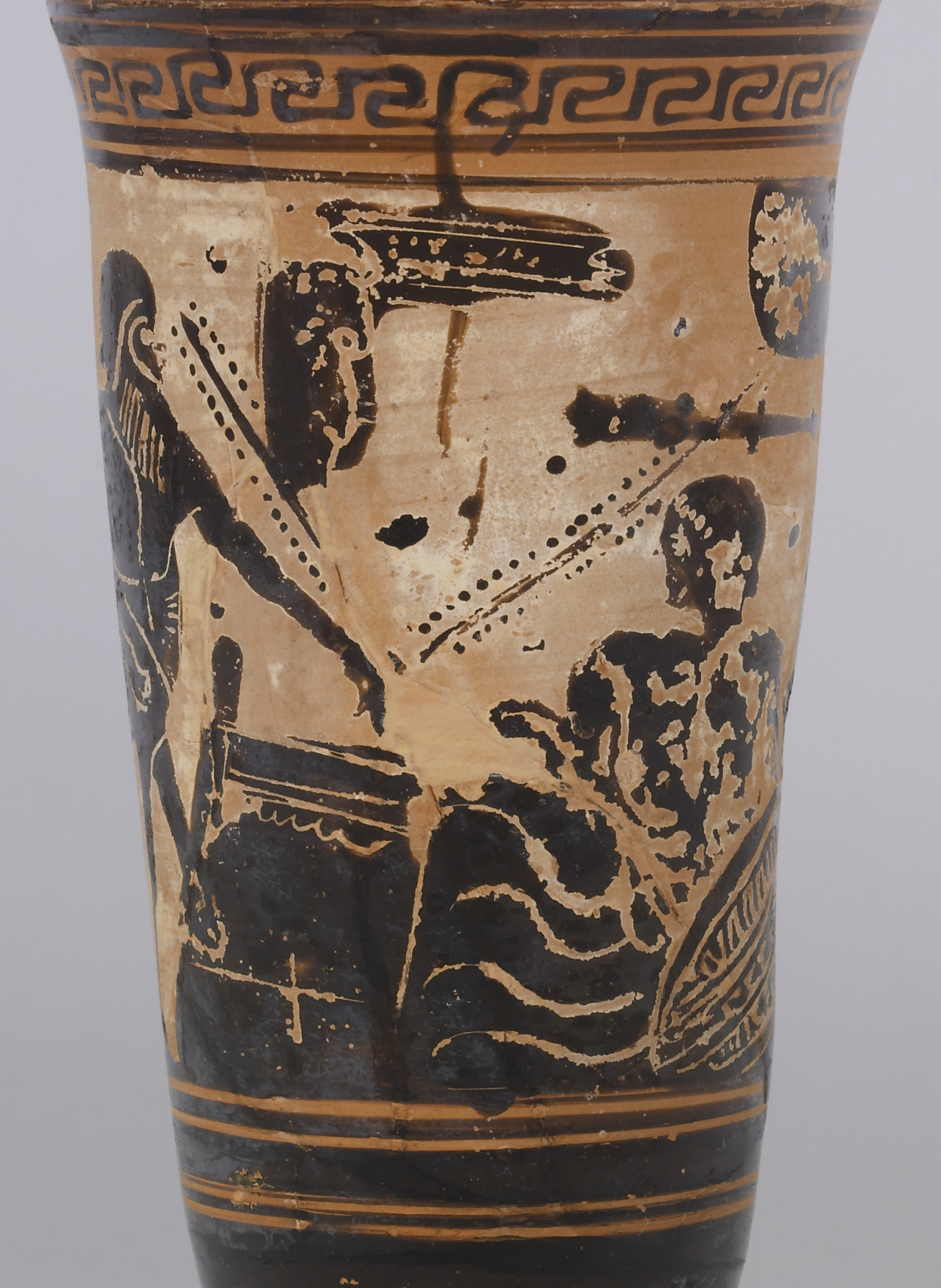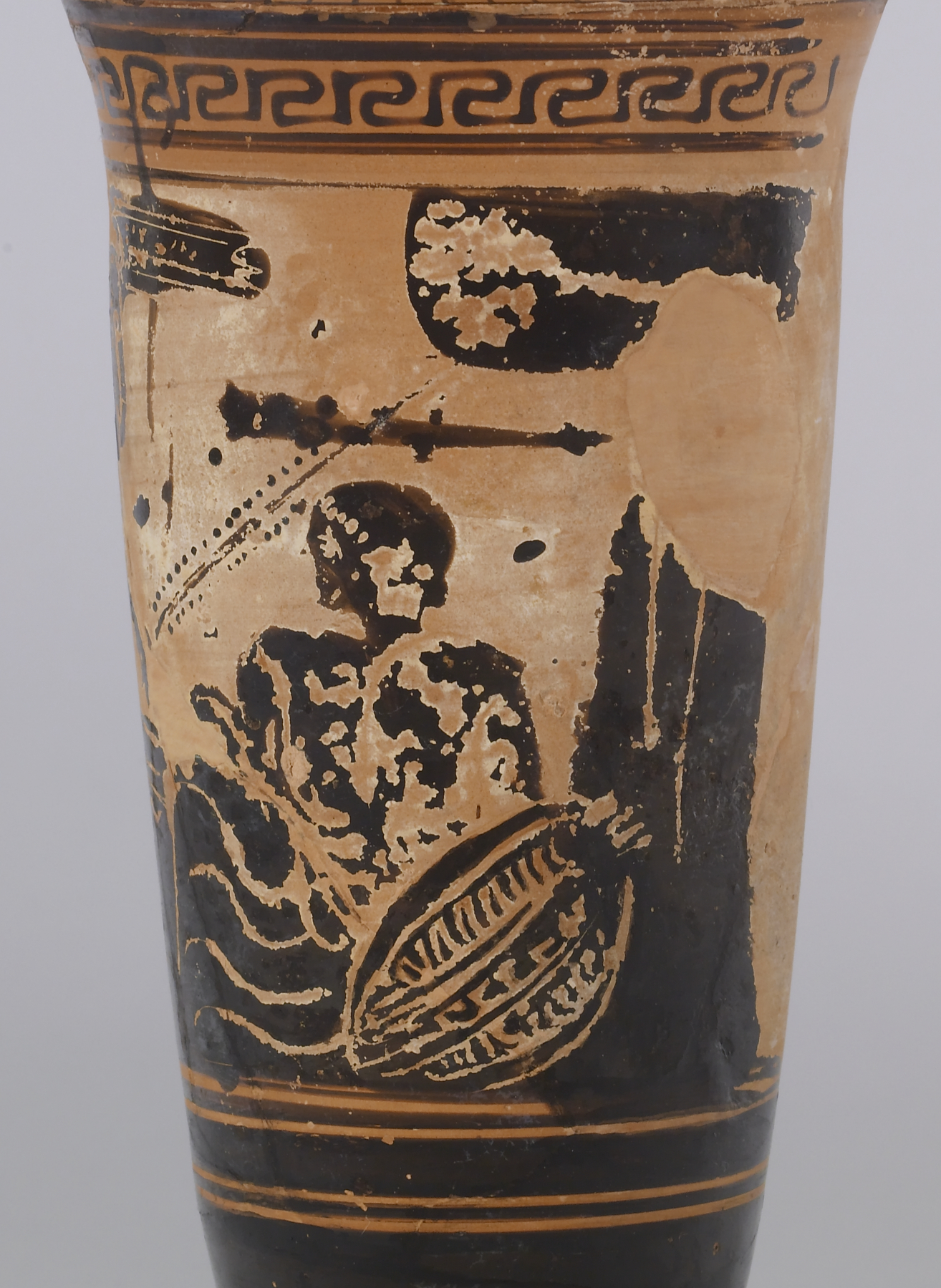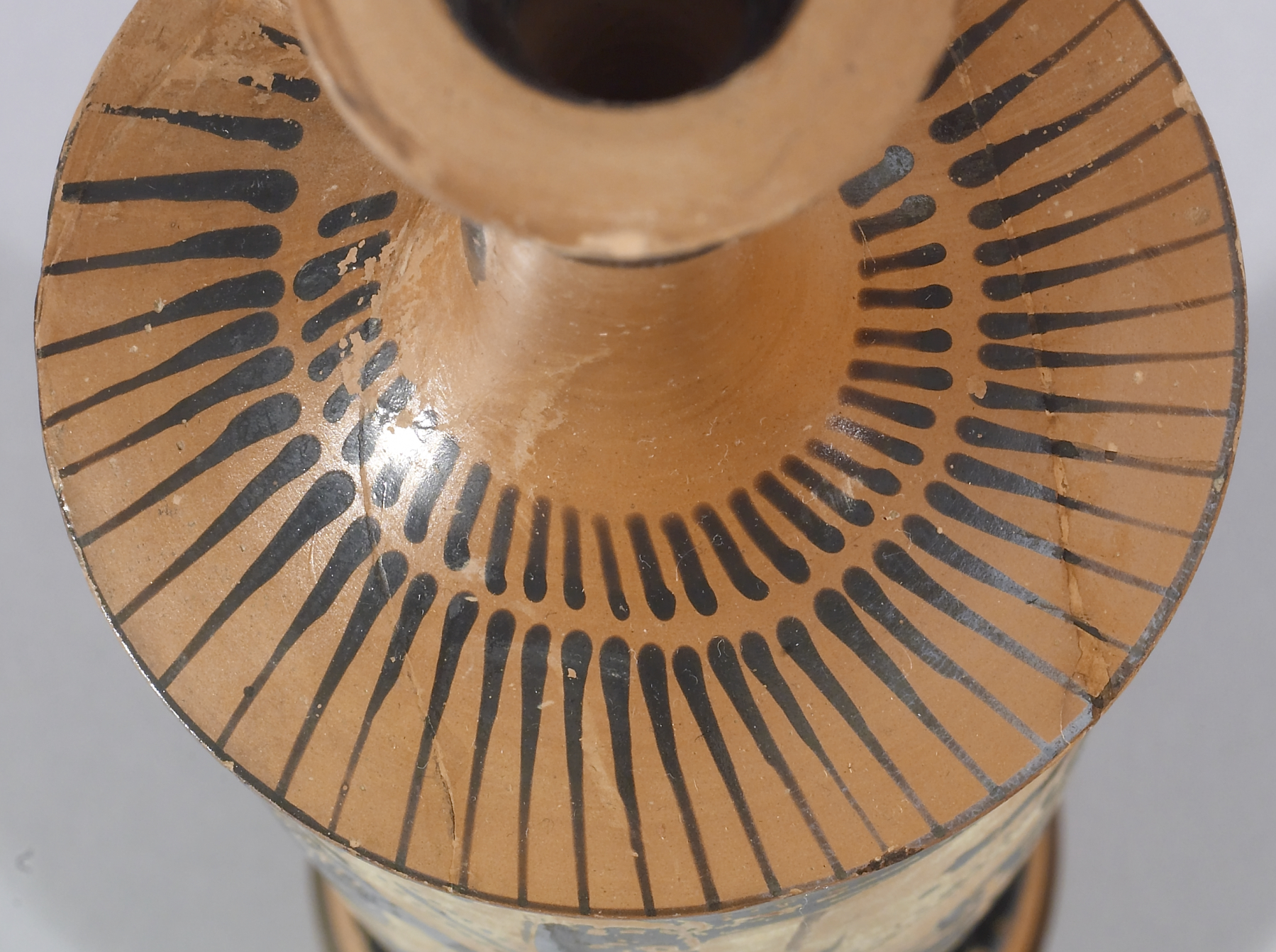Herakles and Pholos
(Ancient Greece )
The surface of this lekythos, a vessel for holding liquids such as oil or perfume, is covered with an assortment of lines and a meander pattern on red on the neck, shoulder, and base. It likely depicts a scene from Herakles' life that was parallel to his main labors. These side-adventures, or "parerga," were entertaining and provocative narratives of interest to artists.
Here we see a draped male figure, leaning against a rock, who can be identified as Herakles by the quiver and the club above his head. He looks to the left, and as our eye moves around the side of the vase following his line of vision, we encounter a centaur, standing before a pithos and facing the hero.
This has been identified as the encounter of Herakles and Pholos, a centaur who lived in the Peloponnese and dwelt in a cave on Mount Pholoe. While Herakles was in search of the Erymanthian boar, Pholos offered him hospitality. Despite Pholos's warnings, Herakles demanded wine. When Pholos opened the wine container, the other centaurs nearby became agitated and attacked, causing Herakles to defend himself with his arrows. In some versions of the story, the wise centaur Cheiron was wounded in this incident, whereas in other versions Herakles accidentally killed Pholos by dropping a poisoned arrow on his foot. The scene depicted here shows the last moment of calm before the storm: Pholos has his hand already above the pithos and is about to pour Herakles a drink.
Provenance
Provenance (from the French provenir, 'to come from/forth') is the chronology of the ownership, custody, or location of a historical object. Learn more about provenance at the Walters.
Joseph Brummer, New York [date and mode of acquisition unknown]; Henry Walters, Baltimore, 1924, by purchase; Walters Art Museum, 1931, by bequest.
Exhibitions
| 2009-2011 | Heroes: Mortals and Myths in Ancient Greece. The Walters Art Museum, Baltimore; Frist Center for the Visual Arts, Nashville; San Diego Museum Of Art, San Diego; Alexander S. Onassis Public Benefit Foundation (USA), New York. |
Conservation
| Date | Description | Narrative |
|---|---|---|
| 7/27/1987 | Treatment | x-ray |
| 1/9/2008 | Treatment | technical analysis; cleaned; stabilized; reconstructed; loss compensation |
Geographies
Greece, Attica (Place of Origin)
Measurements
H: 9 7/16 x Diam: 3 in. (24 x 7.6 cm)
Credit Line
Acquired by Henry Walters, 1924
Location in Museum
Not on view
Accession Number
In libraries, galleries, museums, and archives, an accession number is a unique identifier assigned to each object in the collection.
In libraries, galleries, museums, and archives, an accession number is a unique identifier assigned to each object in the collection.
48.229


